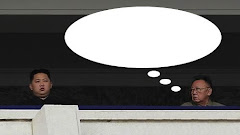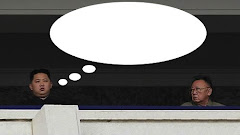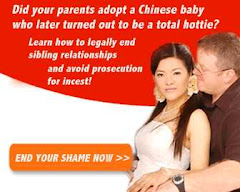Monday, Jun. 09, 1980
Ten Days That Shook Kwangju
Paratroopers put down a citizens' insurrection
As 6,000 people gathered for a peaceful rally in the main square of the provincial capital of Kwangju last week, two gleaming South Korean air force jets arced across the city, made several passes over the demonstrators, then disappeared. The reconnaissance flyover was the first signal that South Korea's military was preparing to break the rebel seizure of Kwangju. For nine days the city had been under the control of some 200 dissident students who had led a full-scale citizens' insurrection, seizing all government buildings and most police stations. For nine days, several thousand troops that had been withdrawn from the center of the city were poised at the outskirts. Other troops, including three crack paratrooper brigades, had been dispatched to encircle the city. On the tenth day this small army, totaling 17,000 men, finally moved into the troubled city.
At 3:30 a.m. Kwangju's 800,000 citizens were awakened by the screech of tank treads and the flutter of helicopters flying in assault formations over the city's roofs. Paratroopers armed with machine guns, stun grenades and handguns stormed rebel strongholds in the provincial government offices, the tourist hotel, the local radio station and the city park. The rebels fought back with carbines, pistols and M16 rifles they had seized from government arsenals. But the civilian youths were scarcely a match for the crack airborne troops. In less than two hours the soldiers had secured Kwangju. As the sun rose over the city, troopers fanned out into the streets to collar every youngster in sight as a suspected rebel. Hundreds of insurgents were arrested. Officially, 19 were killed in the fighting; according to townspeople, the toll may actually have exceeded 100.
Outside the sandbagged government office building, hundreds of women queued up to try to identify the bodies of 16 fallen rebels displayed in open coffins. The corpse of a Protestant minister, Moon Jun Choi, was also found in a small building where the rebels had deposited thousands of their weapons. Hospitals, meanwhile, were overcrowded with wounded; some had been shot in the legs because the paratroopers had been ordered to aim low and avoid killing if possible.
The army assault on Kwangju climaxed a wave of civil turmoil that has shaken the country more seriously than any other in the past two decades. The trouble began three weeks ago, when students in Seoul staged a series of demonstrations. The protests were directed against the martial law that has been in effect ever since the assassination of President Park Chung Hee last October, and against the failure of the weak government of interim President Choi Kyu Hah to produce democratic reforms. The military-backed regime—dominated by the country's emerging strongman, Lieut. General Chun Du Hwan, head of the Defense Security Command as well as acting chief of the Korean CIA—responded with a far-reaching crackdown. It closed all 212 universities, detained hundreds of student militants, and arrested leading political figures, notably Kim Dae Jung, a dissident leader and a popular native son of Kwangju's province. At that, the city rose up in revolt, and angry demonstrations took place in more than a dozen neighboring towns.
The government tried to pin the blame for the violence on Communists and other "impure elements" but, according to most accounts, the armed forces themselves encouraged the rioting by overreacting. Only a handful of the estimated 290 dead were soldiers. The rest were civilians, shot down by the military. Eyewitnesses told TIME Correspondent Edwin Reingold that soldiers had beaten and shot civilians indiscriminately. Said one American resident: "Anybody in the soldiers' way was beaten mercilessly. When they saw the injured lying in the street, the soldiers beat them again." The American saw paratroopers shoot and kill a mother and her five-year-old child. When he shouted in protest, "Why are you doing this?" a soldier yelled back, "This is Korea, not America." A policeman who had changed into civilian clothes and joined the rebellion explained, "We couldn't stand to watch our own people be slaughtered. We're against Communism, but we're also against dictatorship."
Following the recapture of Kwangju, government leaders called for national unity and "a healing of the tragic scars." The martial law command characterized the military assault as a benevolent move "to relieve the suffering of innocent citizens" in Kwangju. The government made a show of ordering generous relief payments to residents of Kwangju, including compensation to people whose homes or businesses were damaged in the fighting.
Hopes for democratic reform any time soon appeared to have dwindled in the wake of the Kwangju rebellion. Increasingly anxious about the stability of one of its most valued allies in the Pacific, the U.S. urged Seoul to take steps "toward the establishment of a broadly based civilian government." Instead the generals heading the country's martial-law regime announced the establishment of a powerful junta-like Special Committee for National Security Measures, consisting of eight civilians and 17 generals, notably Lieut. General Chun. The government claimed the junta was "not a decision-making or legislative organization but an advisory committee to the President, aimed at deliberating various state affairs relating to national security." Oldtimers in Seoul thought otherwise. Many likened it to the Supreme Council for National Reconstruction created by the late President Park Chung Hee to consolidate his own power after his 1961 military takeover.
Sphere: Related Content
At 3:30 a.m. Kwangju's 800,000 citizens were awakened by the screech of tank treads and the flutter of helicopters flying in assault formations over the city's roofs. Paratroopers armed with machine guns, stun grenades and handguns stormed rebel strongholds in the provincial government offices, the tourist hotel, the local radio station and the city park. The rebels fought back with carbines, pistols and M16 rifles they had seized from government arsenals. But the civilian youths were scarcely a match for the crack airborne troops. In less than two hours the soldiers had secured Kwangju. As the sun rose over the city, troopers fanned out into the streets to collar every youngster in sight as a suspected rebel. Hundreds of insurgents were arrested. Officially, 19 were killed in the fighting; according to townspeople, the toll may actually have exceeded 100.
Outside the sandbagged government office building, hundreds of women queued up to try to identify the bodies of 16 fallen rebels displayed in open coffins. The corpse of a Protestant minister, Moon Jun Choi, was also found in a small building where the rebels had deposited thousands of their weapons. Hospitals, meanwhile, were overcrowded with wounded; some had been shot in the legs because the paratroopers had been ordered to aim low and avoid killing if possible.
The army assault on Kwangju climaxed a wave of civil turmoil that has shaken the country more seriously than any other in the past two decades. The trouble began three weeks ago, when students in Seoul staged a series of demonstrations. The protests were directed against the martial law that has been in effect ever since the assassination of President Park Chung Hee last October, and against the failure of the weak government of interim President Choi Kyu Hah to produce democratic reforms. The military-backed regime—dominated by the country's emerging strongman, Lieut. General Chun Du Hwan, head of the Defense Security Command as well as acting chief of the Korean CIA—responded with a far-reaching crackdown. It closed all 212 universities, detained hundreds of student militants, and arrested leading political figures, notably Kim Dae Jung, a dissident leader and a popular native son of Kwangju's province. At that, the city rose up in revolt, and angry demonstrations took place in more than a dozen neighboring towns.
The government tried to pin the blame for the violence on Communists and other "impure elements" but, according to most accounts, the armed forces themselves encouraged the rioting by overreacting. Only a handful of the estimated 290 dead were soldiers. The rest were civilians, shot down by the military. Eyewitnesses told TIME Correspondent Edwin Reingold that soldiers had beaten and shot civilians indiscriminately. Said one American resident: "Anybody in the soldiers' way was beaten mercilessly. When they saw the injured lying in the street, the soldiers beat them again." The American saw paratroopers shoot and kill a mother and her five-year-old child. When he shouted in protest, "Why are you doing this?" a soldier yelled back, "This is Korea, not America." A policeman who had changed into civilian clothes and joined the rebellion explained, "We couldn't stand to watch our own people be slaughtered. We're against Communism, but we're also against dictatorship."
Following the recapture of Kwangju, government leaders called for national unity and "a healing of the tragic scars." The martial law command characterized the military assault as a benevolent move "to relieve the suffering of innocent citizens" in Kwangju. The government made a show of ordering generous relief payments to residents of Kwangju, including compensation to people whose homes or businesses were damaged in the fighting.
Hopes for democratic reform any time soon appeared to have dwindled in the wake of the Kwangju rebellion. Increasingly anxious about the stability of one of its most valued allies in the Pacific, the U.S. urged Seoul to take steps "toward the establishment of a broadly based civilian government." Instead the generals heading the country's martial-law regime announced the establishment of a powerful junta-like Special Committee for National Security Measures, consisting of eight civilians and 17 generals, notably Lieut. General Chun. The government claimed the junta was "not a decision-making or legislative organization but an advisory committee to the President, aimed at deliberating various state affairs relating to national security." Oldtimers in Seoul thought otherwise. Many likened it to the Supreme Council for National Reconstruction created by the late President Park Chung Hee to consolidate his own power after his 1961 military takeover.






















No comments:
Post a Comment
Share your thoughts, but please be kind and respectful. My mom reads this blog.